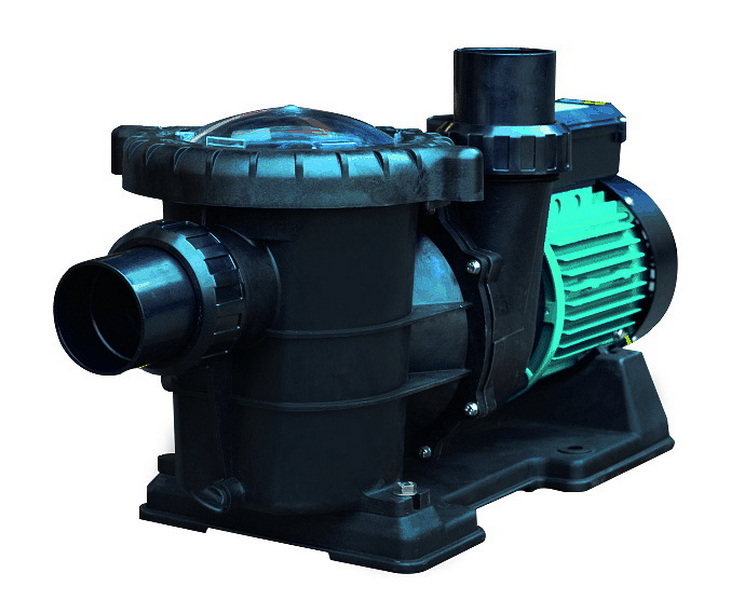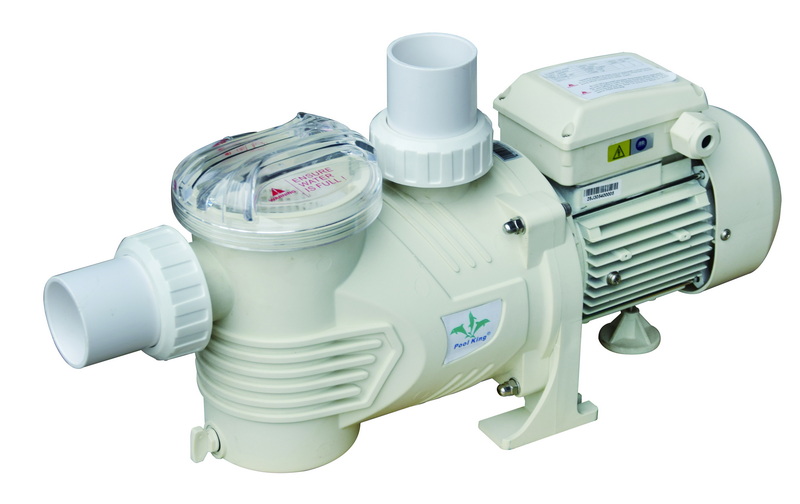







Content Menu
● Why Is Pump Runtime Important?
● Calculating Pool Pump Run Time
>> Key Formula
>>> Example:
● Factors Affecting Ideal Run Time
>> Climate and Seasonal Changes
● Best Practices for Pump Operation
● Variable-Speed vs. Single-Speed Pumps
● Signs of Under or Over-Running Your Pump
● Troubleshooting and Maintenance Tips
● Frequently Asked Questions (FAQ)
>> 1. How long should I run my pool pump every day?
>> 3. Can I run my pool pump at night?
>> 4. Should I adjust run time seasonally?
>> 5. What if my water is cloudy or green?
Operating a pool pump efficiently ensures sparkling clean water, balances chemical levels, and prolongs equipment lifespan. For owners and operators—especially those sourcing advanced sand filters and filtration systems from leading Chinese manufacturers—understanding optimal pool pump runtimes is both a science and an art. This comprehensive resource will answer all key questions, from calculation formulas and influencing factors to troubleshooting, best practices, and advanced operation tips.

A pool pump is the heart of a swimming pool's filtration system. It circulates water through the filter, capturing debris, contaminants, and microorganisms, and returns clean water back to the pool. This process maintains water clarity, safety, and chemical balance, improving the experience for swimmers and reducing maintenance headaches for owners.[1][2]
Running the pump too little results in cloudy water, algae growth, and unsafe swimming conditions. Running it too long wastes energy and increases operating costs. Striking the right balance is the key to a healthy, economical pool.[3][2]
First, calculate your pool's water volume—the foundation for determining runtime:
- Rectangular/Square Pool (one depth):
Length × Width × Depth × 7.5 = Gallons
- Rectangular/Square (variable depth):
Length × Width × Average Depth × 7.5 = Gallons
(Average Depth = [Shallow End + Deep End] ÷ 2)
- Round Pool:
3.14 × Radius × Radius × Average Depth × 7.5 = Gallons
For fast, accurate results, online calculators are available.
The flow rate (measured in GPM—gallons per minute) specifies how much water the pump circulates per minute. This info can usually be found on the pump's specification label or user manual.
- Turnover Rate Calculation:
Total Pool Volume ÷ Gallons per Hour (GPH) = Turnover Time (hours)
Where:
GPH = GPM × 60
Suppose your pool holds 20,000 gallons and the pump flows at 40 GPM.
- GPH = 40 × 60 = 2,400
- Turnover Time = 20,000 ÷ 2,400 ≈ 8.3 hours
This means the pump should run about 8–9 hours per day for one full circulation.[2][1][3]
Run the pump one hour for every 10°F of air temperature. For an 80°F day, aim for 8 hours of runtime.[4][2]

Understanding the variables at play can help you fine-tune your pool pump schedule for any environment.
- Larger pools hold more water and require longer times for full turnover.
- Irregular shapes and attached spas/water features may need extra runtime for even filtration.[3]
- Hot, sunny weather: Increases algae risk and chlorine breakdown, demanding more filtration.
- Storms/rainy periods: Add debris and dilute chemicals, requiring longer or extra cycles.
- Cooler seasons/low use: You may reduce runtime to 4–6 hours, if the pool is mostly unused.[5][3]
- More swimmers introduce more debris, body oils, and pathogens—run the pump longer after parties or heavy use.
- Light use lets you stick to minimum recommendations, but run a full turnover after each swim day for best clarity.[1][3]
- Pools near trees, plants, or construction zones are prone to contamination and may require additional runtime to keep water clear.[6][3]
- Imbalances or heavy contaminant loads may necessitate increasing filtration time to recover clarity after treatment.[3]
- High-efficiency or variable-speed pumps usually run longer at lower power for greater savings and better water quality.
- Standard single-speed pumps are best run in one long cycle or two split cycles per day.
- Split Cycles: For better circulation and debris removal, divide runtime (for example, two 4-hour sessions instead of one 8-hour cycle).
- Timer Use: Automatic timers or smart Wi-Fi plugs let you stick to exact schedules, improving energy efficiency.
- Run During Off-Peak Hours: In regions with variable energy rates, set the pump to operate when electricity is cheapest.
- Regular Maintenance: Keep strainer baskets, skimmers, and filters clean for optimal flow and economy.
- Seasonal Adjustments: Increase runtime during summer, reduce slightly during winter, but never let water sit idle.
| Pump Type | Advantages | Recommended Use |
|---|---|---|
| Single-speed | Simple, reliable, faster turnover | Best for smaller pools, continuous schedules |
| Variable-speed | More energy-efficient, quieter, customizable speed | Large/commercial pools, energy cost reduction |
Variable-speed pumps, though more expensive upfront, can result in savings of up to 70% on energy compared to traditional pumps. Their flexibility allows longer runtime at low RPM, maximizing filtration while minimizing cost and equipment wear.[7][1][3]
Under-running:
- Cloudy or green water
- Excess debris
- Algae growth
- Skin/eye irritation among swimmers
Over-running:
- High energy bills
- Excessive equipment wear
- Potential for running the pool dry (if water level drops too low)
- Inspect baskets and strainers regularly: Remove leaves and debris to maintain efficiency.[8][9]
- Monitor pressure gauges: Rising pressure usually means it's time to clean or backwash the filter.[8]
- Check for leaks: Even small leaks can reduce performance and increase costs.[8]
- Keep the impeller clean: Clogs cause slow water movement and could damage the pump over time.[9]
- Schedule annual checkups: Professional inspections can spot issues before they become expensive problems.[8]
Determining the optimal daily runtime for a pool pump involves pool volume, pump speed, climate, and usage patterns. On average, running the pump for 8–12 hours daily achieves one full water turnover—a must for sanitary, clear, and inviting water. Advanced equipment like variable-speed pumps enables longer, more efficient filtration with significant cost savings. By adopting regular maintenance routines, monitoring water quality, and adjusting schedules for the seasons and user activity, pool owners can consistently enjoy clean, healthy water with minimal expense and effort.

Most residential pools require 8–12 hours daily, aiming for a full water turnover each day.[2][1][3]
Yes, larger pools need more runtime for complete circulation. Calculate precise needs using your pool's gallon volume and pump flow rate.[12][1][2]
Absolutely. Running at night may save energy if off-peak rates apply. However, always ensure total runtime meets the one-turnover rule.
Yes, increase during hot/peak seasons or after storms/parties; reduce during colder months unless the pool is heavily used.[5][3]
Increase runtime, check and clean the filter, test and adjust chemistry, and re-calculate gallons and flow rates to ensure sufficient daily turnover.
[1](https://iopool.com/blogs/pool-advices/filtration-time-of-pool-pump)
[2](https://www.poolsuppliessuperstore.com/help/calculate-pool-pump-run-time)
[3](https://www.fjvconstruction.com/how-often-should-you-run-your-pool-pump)
[4](https://lesliespool.com/blog/how-to-calculate-pool-pump-run-time.html)
[5](https://sunloverheating.com.au/how-long-to-run-your-pool-pump-in-summer/)
[6](https://www.pvcfittingsonline.com/blogs/resource-center/how-often-should-i-run-my-pool-pump)
[7](https://cherrypoolservices.com/best-practices-in-running-your-pool-pump/)
[8](https://sparklingclearpool.com/deep-dive-into-pool-pump-care-advanced-tips-and-hacks/)
[9](https://poolpartstogo.com/blogs/articles/installation-and-maintenance-tips-for-pool-pump)
[10](https://www.youtube.com/watch?v=u4ExnupI26o)
[11](https://www.youtube.com/watch?v=LvN8m1AsrHI)
[12](https://calimingo.com/blog/calculate-how-long-to-run-your-pool-pump/)
[13](https://sunpools.com/blog/how-long-run-pump-daily/)
[14](https://www.blue-white.com/resources/calculators/pool-flow-rate-calculator/)
[15](https://www.mtlakepool.com/2025/06/25/how-long-to-run-a-pool-pump-when-opening/)
[16](https://www.reddit.com/r/pools/comments/1f5384i/calculating_pump_runtime/)
[17](https://www.aaronpoolsandspas.com/pool-pumps-the-best-time-to-run-your-pump/)
[18](https://www.energy.gov/energysaver/choosing-installing-and-operating-efficient-swimming-pool-pump)
[19](https://poolicons.com/pool-maintenance/complete-beginners-guide-to-pool-pump-operation/)
[20](https://www.reddit.com/r/pools/comments/15ysu79/new_pool_owner_here_how_long_do_you_run_your_pump/)
